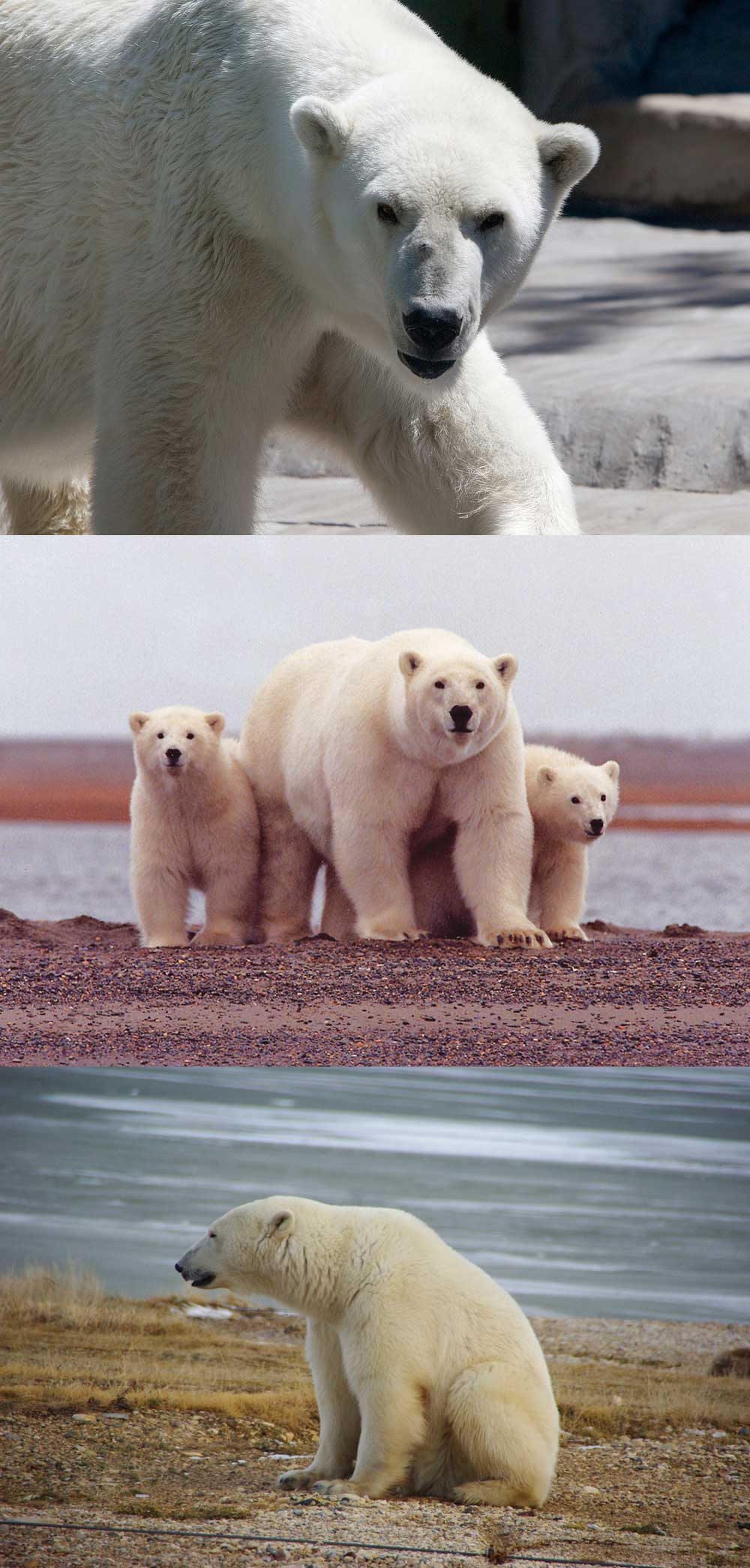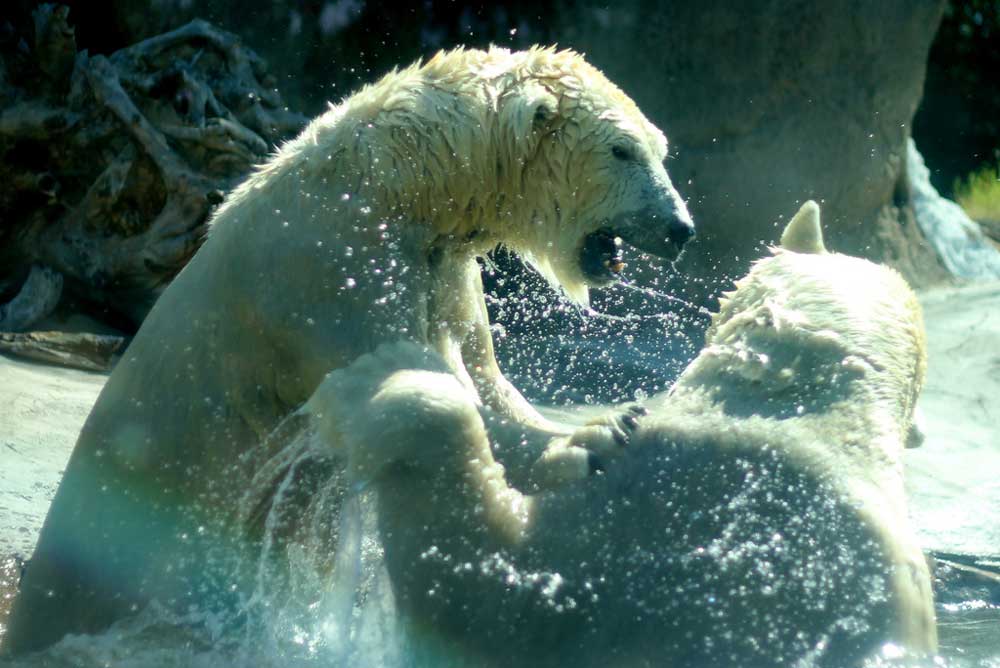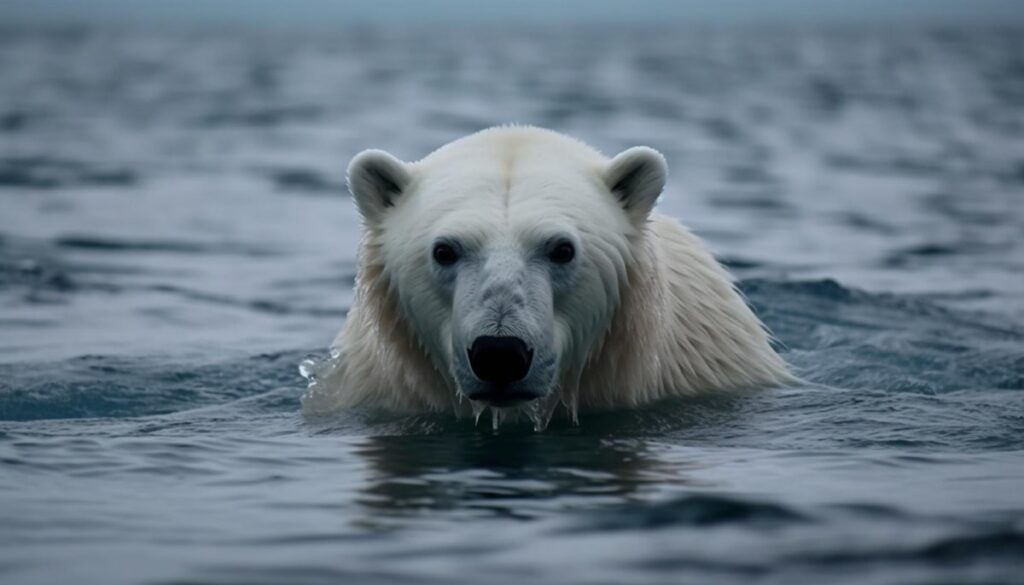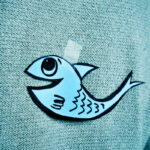- Black skin: A polar bear’s fur can vary in color from almost chalky white to ivory – but its skin is completely black, which helps it absorb heat from the sun
- North Pole: Although in books and even movies, polar bears and penguins are often seen side by side, this is not the case in reality, as penguins are only found around Antarctica (South Pole) and polar bears around the Arctic (North Pole). Specifically, polar bears are only found in the following 5 countries: Greenland, Norway, Russia, USA and Canada
- Large predators: Polar bears are the largest living bears and also the largest living predators that can hunt on land. A polar bear can grow up to 3 meters long and weigh up to 700 kg. The average shoulder height is 133 cm
- Best swimmer: Although all bears are great swimmers, the polar bear is arguably the best; it can swim up to 160 km without rest and in one case a bear has been observed swimming 320 km without stopping! Polar bears can also dive
- Birth: Along with panda bears, polar bears are the only two bear species born with fur
- Kuld: Polar bears usually give birth to 2 cubs at a time. However, single cubs and triplets can also occur, although this is often related to the health of the mother
- Growing up: Polar bear cubs stay with their mother for up to 2 ½ years to learn how to hunt and generally cope in the Arctic environment
- Marine mammals: Polar bears are the only bear species that is classified as a marine mammal – a mammal that spends most of its life in the ocean
- Furry paws: Polar bears are the only bears that have fur under their paws and between their toes. This is because bears lose most of their heat through their paws (and polar bears live in a cold climate)
- Winter hibernation: Polar bears don’t hibernate – only brown bears and American black bears do. However, pregnant polar bears do “nest” and go into a sort of resting period during gestation

Without ice, polar bears can’t catch seals – their primary food source
Polar bear hunting and feeding
- Sense of smell: A polar bear’s sense of smell is about 100 times better than a human’s. For example, a polar bear can smell prey from 32 km away and also smell a dead seal under 90 cm of ice!
- Is: Although polar bears have by far the largest hunting grounds of all bears, they also have limitations because they rely on ice to catch seals. When the ice retreats in the summer, they sometimes swim hundreds of kilometers to follow the ice to find food. If they are caught on land in the summer, they are forced to wait for the water to freeze again in the fall, as they rarely catch seals in the open sea
- Lard: A polar bear’s stomach can hold 68 kg of meat or blubber (fat) and it needs 2 kg of blubber per day to survive. However, polar bears’ eating habits – and opportunities to eat – are generally characterized by alternating between fasting and eating large meals. When hunting is good, polar bears prefer to eat only blubber and can even eat up to 50 kg in one meal!
- Food: Although polar bears’ primary food is seals, they are opportunistic hunters, eating almost anything they can find or catch. Their diet includes rodents, birds, eggs, fish, whales, plants (including seaweed and berries) and human waste
- Alpha predator: Polar bears are at the top of the food chain (so-called ‘alpha predators’), which means, among other things, that they have no natural enemies (i.e. predators that feed on polar bears)

Fact: In addition to being the largest bear species, polar bears are the largest living predators that can hunt on land. Here are two polar bears fighting
Myths and misconceptions
- “Polar bears cover their black snout with their paws when hunting to avoid detection by their prey” (they don’t)
- “Polar bears’ hollow hair directs UV light to their black skin” (hairs don’t and it has been tested and disproven by a physicist named Daniel Koon)
- “Polar bears use tools” (they don’t – even if other bear species do)
- “The polar bear lives in symbiosis with the Arctic fox” (according to this myth, the polar bear benefits from the Arctic fox’s vigilance in hunting and possible threats, and in return, the polar bear shares its food with the Arctic fox. However, this is not true; Arctic foxes follow polar bears and feast on their scraps, but polar bears find this more annoying than beneficial)
- “Polar bears are left-pawed” (they are not; scientists have even found – by observation – that polar bears have no preference for their limbs and use them equally)
You can also see our article about bears here.





